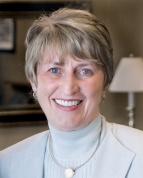Dickinson College Recognized for Climate Leadership
Dickinson College receives Second Nature’s 1st Annual Climate Leadership Award for Institutional Excellence in Climate Leadership. Award recipients were recognized at the 4th Annual American College & University Presidents’ Climate Commitment (ACUPCC) Summit in Denver, CO on October 12th.
Dickinson College’s Climate Action Plan aims to attain climate neutrality by 2020. Current efforts include the conversion of the central energy plant boilers to burn Viesel, a net-zero carbon biofuel made from filtered waste vegetable oil. The college purchases renewable wind energy credits equivalent to 100% of annual electricity consumption and has installed 84 kilowatts of solar photovoltaics with student assistance and produces 50-100 gallons of biodiesel per week from waste vegetable oil in student run biodiesel shop.
- Read more about Dickinson College Recognized for Climate Leadership
- Add new comment

![DC logo.red[2]](http://secondnaturebos.files.wordpress.com/2010/09/dc-logo-red2.jpg?w=180&h=180)










